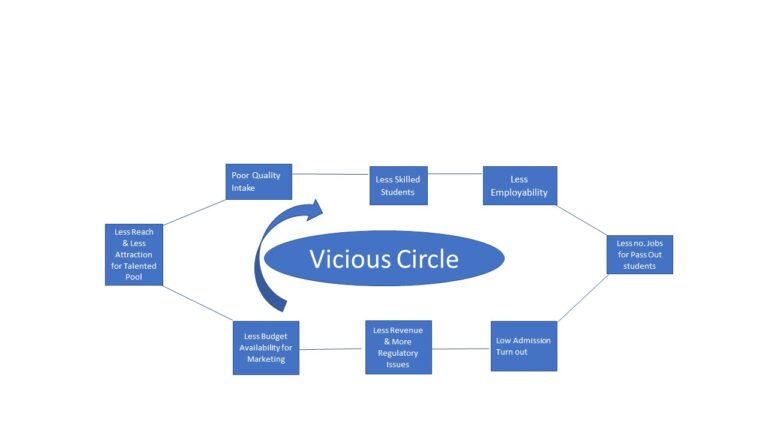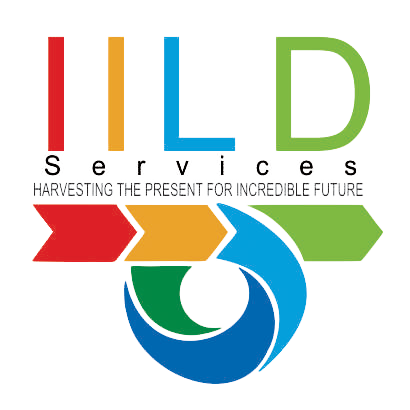10 Challenges for Institutes preventing them to perform
The biggest challenge with academic institutes is becoming relevant to industries, employers & students simultaneously.
However, this challenge has been attributed to various factors described below-
Quality of Students Intake
It is the biggest challenge & cannot be controlled by Institutes. Private Colleges in India face the problem of intake of students which varies in quality in terms of basic analytical, communication capabilities & actionable attitude. This situation poses a huge challenge to Institute to a making them a useful resource for industries, eventually results in less interested employers to visit the campus.
The issue of Industry Experience
Students admitted to college having no work experience as most of the parents want their children to finish their education before opting to work. Thus, students lack industry experience in terms of social & soft skills which is necessary for obtaining any job. Many of them come from a background in the first 15 years of education which does not prepare them for the number of soft- and life-skills which help them to be a better employee.
Issues of faculty availability & their disconnect with Industries
There is limited availability of cost-effective faculties with a blend of academics, Industrial experience, research and consulting. Faculties are engaged in completing the formal syllabus & courses as it is the demand of students, parents & regulatory bodies. They don’t get enough time & opportunities to interact with corporates & industries. Subsequently, real industrial experience is not being shared continuously with the students for making them relevant resources.
Rigid & regulatory bound curriculum
Industries are upgrading very fast & demanding new skills. Many of these skills are not the part of the regular curriculum. Institutes have to follow the regulatory guidelines and that’s why unable to match the skills demanded by employers.
However, institutes are trying hard to expose students & faculties with industry work in form of a short-term workshop, inter-college events, case study, discussion panels, internship of students but course completion remains the priority due to impose regulations.
Trust of Employers
As per the country’s education system, a formal degree is mandatory for any kind of career beginning, but employers are seeking specific skills that are not an integral part of the course curriculum due to various factors. In the initial years, employers visited hundreds of institutes for placement activities but observed the least candidates with relevant skills. That’s why employers are losing their trust in institutes.
The declining trend of Campus Placement
Campus placement is declining year by year in the overall scenario. Institutes are finding it difficult to attract potential employers’ despites of placement cell activities. The trend has been declined sharply in a couple of years as the demand for new skills has been generated fast. Industries are updating fast due to competition & looking for a relevant set of skills in every new or existing employee.
The mismatch between Students expectations & College deliveries on the same curriculum
However, the quality of student intake is a major problem, but still students & their parents are expecting great placements or jobs near completion of course. On the other hand, institutes have different priorities like meeting all regulatory standards & completing the course for successful results for students in degree awards. But this is turning out to the lower number of referrals by existing batches.
Increase in marketing expenses
Potential admissions seekers are well informed nowadays, they evaluate the Institutes based on Infrastructure, Quality of education & success records of previous batches. Many institutes are known for supplying especially skilled candidates to industries just because of developing a specific set of knowledge bases.
It creates automatic & default branding for the academic institution. Successful students also provide many referrals and work as Brand ambassadors of the institute. But, in absence of these propositions, institutes have to incur huge budgets in marketing & advertising. At many times there are fewer admissions despite huge Print, Radio & TV advertising.
Excessive pressure of regulatory bodies
Due to the underutilization of seats, institutes have to follow the officers of regulatory bodies and have to spend energy in other directions to encounter their objections. Survival comes on the stake in case of continuous underutilization of seats.
Competition in Infrastructure & facilities arrangements
Last but not the least, the huge expense has to be borne by the institute to compete with others in form of better curriculum, IT infrastructure, Building & comfort infrastructure, Teaching methods, tools and methodologies, faculty members and their skills, course module, evaluation and assessment processes, gadgetries and equipment. However, the success of previous batches remains the most important parameter to compete with others.
The overall situation is creating a phenomenon of a vicious circle which is the biggest challenge for institutes. It starts with the intake quality of students, on which of-course institutes have no control and ends up which heavy expenses in marketing & sometimes leads to survival problems too. Above mentioned facts can be summarised in the graphical form of the vicious circle –



 Getting the first job immediately after the degree is a dream of every fresher but...
Getting the first job immediately after the degree is a dream of every fresher but...  Free Digital Marketing Resources for New Startups & Freelancers Business is all about creating relevant products & reaching...
Free Digital Marketing Resources for New Startups & Freelancers Business is all about creating relevant products & reaching...